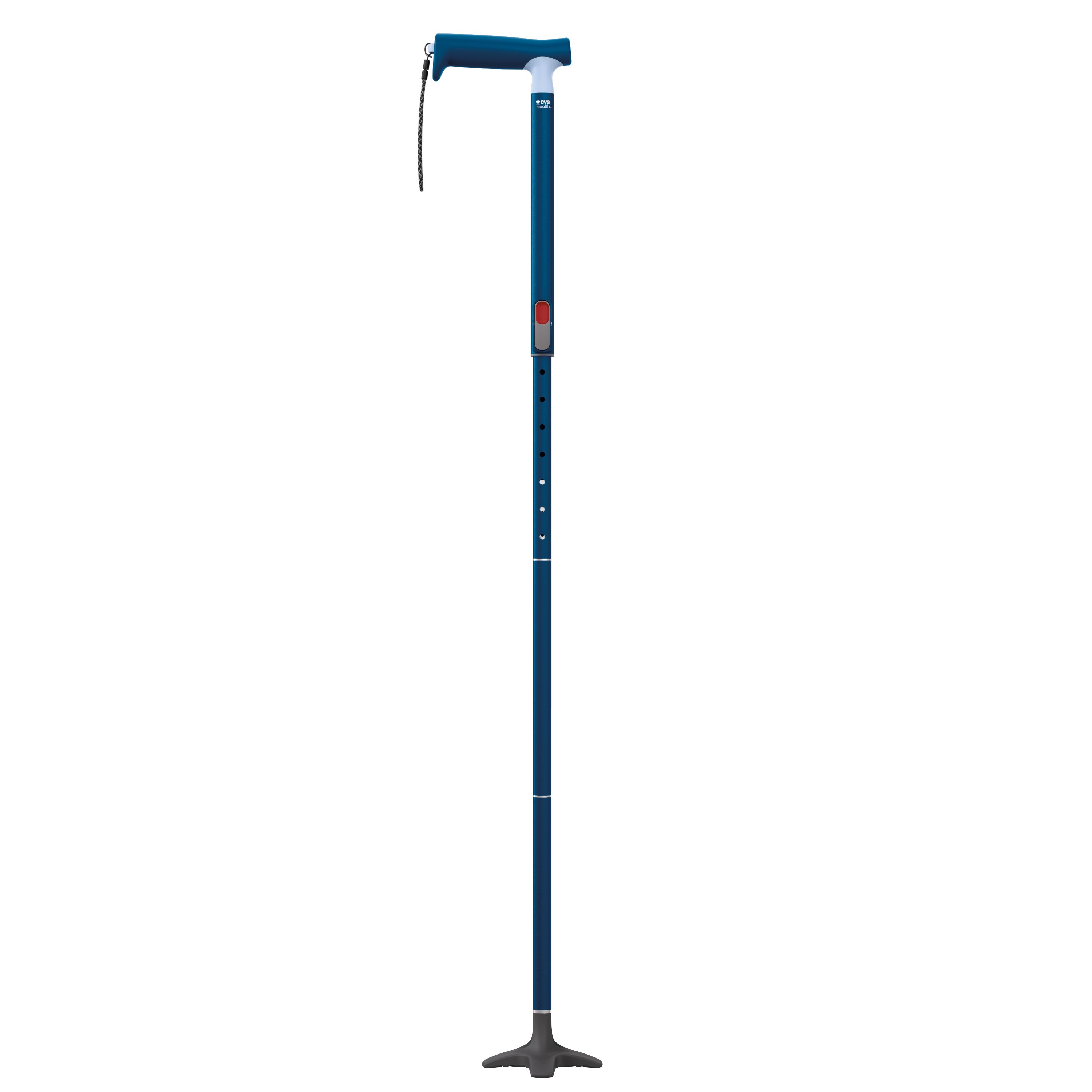Walking Canes
)
)
)
Shop more canes & crutches
What Are Canes?
A walking cane also referred to as a walking stick is a mobility aid that has a long leg and a handle and is meant to help provide accessibility to those who need that little extra support. Medical providers recommend canes for individuals who need extra support due to weakness in one leg. Canes improve balance and stabilize the body while you walk. The cane is carried in the hand opposite the weaker leg. When you walk, you swing the cane and your weak leg forward at the same time. Then, you step past the cane with the other leg and repeat. If you're unsure whether a cane is the right mobility aid for your needs, consult your medical provider.
Types of Canes
The first thing to consider when shopping for an assistive cane or walking stick is whether you prefer a one or four point model. A single point cane is lightweight and compact, making it easy to travel with and simple to move. Four-prong canes, also known as a quad cane, are weightier and larger, but provide more stability for users. Some single point and quad canes have special features that may be beneficial to you. Folding canes are another option to keep in mind. Folding canes are hinged, allowing them to fold up to a compact size for easy transport. Estos folding canes are made for easy storage when not in use. Most walking canes are adjustable so you shoud keep that in mind when shopping for the best walking stick for you. There are also walking canes with wrist straps that make it possible to secure a cane to your arm for more security while you walk. Gel grips on cane handles provide a cushioned surface that is comfortable to hold onto. Bariatric canes are designed to support more weight than conventional canes, often having weight limits of 300 to 350 pounds or more. Most canes are made out of aluminum to help provide that necessary support. CVS offers a variety of walking canes for women and walking canes for men.
Cane Handles
Another thing to consider when shopping for a assistive cane is the handle type. Traditional canes have a curved or straight handle that is positioned at the top of a straight shaft. This type of cane comes in a wide range of colors and designs to suit the preferences of users. Offset canes have a U-shaped curve at the top and a straight handle. With this design, the canes can support more body weight. Folding canes have more of a straight hangle to make it easier to pack up. CVS also offers a comfort handle cane option which is almost C shaped and has a nice and comfortable grip.
How To Walk With a Cane
To walk with a cane, hold it in the opposite hand to the side that needs the support, then position it slightly to the side and approximately two inches forward. Move the can forward at the same time as you step forward with the affected leg. Always hold the cane steady in place when walking forward with the unaffected leg. Don't be afraid to ask someone for help or for support as you're learning how to use it. To use a cane on stairs, hold onto the handrail for support and step up with the unaffected leg first. Next, step up at the same time with the affected leg and cane. Put your cane on the lower step first when walking downstairs, then step your affected leg into the step, followed by the unaffected leg. Always make sure that your cane is completely stable before walking, and gaze ahead rather than looking down to the ground.
Búsquedas relacionadas
Neck Supports, Medical Scooters, Cane and Crutches Accessories

)
)
)
)
)
)
)
)
)
)
)
)
)
)
)
)
)